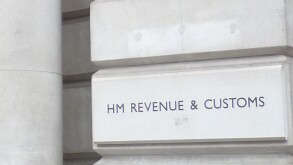
|

|
|
Jim Fuller |
David Forst |
We discussed parts of the new US Model in our March 2016 column. The 2016 US Model Treaty also contains a number of changes to article 22 dealing with the limitations on benefits (LOB) provisions.
Active-trade-or-business test
The active-trade-or-business test in the 2016 model requires a factual connection between an active trade or business in the residence country and the item of income for which the benefits are sought. Specifically, the 2016 model requires that the treaty-benefitted income "emanates from, or is incidental to," a trade or business that is actively conducted by the resident in the residence state.
The technical explanation of the 2016 model, which Treasury plans to release soon, will provide guidance on when an item of income, in particular an intra-group dividend or interest payment, is considered to emanate from the active conduct of a trade or business of a resident.
Treasury is considering an example that involves dividends and interest paid by a commodity-supplying subsidiary that was acquired by a company whose business in the residence state depends on a reliable source for the commodity supplied by the subsidiary. The dividends and interest would be considered to emanate from the active trade or business of the parent.
The preamble states that another possible example could involve dividends and interest paid by a subsidiary that distributes products that were manufactured by the parent country in its state of residence.
In contrast, the mere fact that two companies are in similar lines of business would not be sufficient to establish that dividends or interest paid between them are related to the active conduct of a trade or business.
Derivative benefits
The 2016 model allows companies to qualify for treaty benefits under a "derivative benefits" test. While a form of derivative benefits is included in most US treaties with countries in the EU, those treaties limit permissible third-party ownership to seven or fewer "equivalent beneficiaries" , all of which generally must be resident in a member country of the EU or the North America Free Trade Agreement.
The 2016 model contains no geographic restriction, instead requiring only that 95% of the tested company's shares be owned directly, or indirectly, by seven or fewer persons that are equivalent beneficiaries.
The 2016 model also allows certain categories of qualified persons in the state of source to be treated as equivalent beneficiaries provided that these persons in the aggregate do not own more than 25% of the tested company.
The treaty would restrict intermediate ownership to companies resident in the same state as the company seeking benefits or in a country that has a comprehensive income tax treaty in force with the source country that contains rules addressing special tax regimes (STRs) and notional interest deductions (NIDs) that are analogous to the rules in the 2016 model treaty.
Derivative benefits provisions in existing US treaties require, to qualify as an equivalent beneficiary with respect to income referred to in article 10 (dividends), 11 (interest), or 12 (royalties), that the third-country resident must be entitled, either under a comprehensive convention for the avoidance of double taxation between its country of residence and the source country or otherwise, to a rate of tax with respect to the particular category of income that is less than or equal to the rate applicable under the tax treaty pursuant to which benefits are being claimed.
Companies that fail to satisfy this rate comparison test today are not entitled to treaty benefits, and therefore are generally subject to a 30% gross basis withholding tax on US source payments of dividends, interest (other than interest of a portfolio nature), and royalties. The 2016 model removes this so-called "cliff effect," and instead entitles a resident of the treaty partner to the highest rate of withholding to which the third-country resident owners would be entitled.
Under existing treaties that include a derivative benefits test, subsidiaries of private companies are unable to qualify for benefits regarding dividends under the derivative benefits test because individual shareholders are only entitled to a 15% rate on dividends, and therefore the cliff effect described above would preclude any reduction in dividend withholding.
The 2016 model allows certain companies relying on derivative benefits to qualify for the 5% rate of withholding on dividends even if the company's shareholders are individuals who would not be entitled to the 5% rate. To achieve this, the definition of equivalent beneficiary in the 2016 model has been modified to allow individual shareholders to be treated as companies for purposes of the rate comparison test with respect to dividends, provided that the company seeking to qualify under the derivative benefits has sufficient substance in its residence country to indicate that the individual shareholders are not simply routing income through a corporate entity to benefit from the lower company rate.
Headquarters companies
The 2016 model treaty's LOB provision includes a headquarters-company provision that is based on analogous tests found in some existing US tax treaties, but with important modifications.
The 2016 model requires the headquarters company to exercise primary management and control functions (and not just supervision and administration) in its residence country regarding itself and its geographically diverse subsidiaries. The new provision also differs from existing headquarters company provisions by including a base erosion test.
A headquarters company is also only entitled to benefits regarding dividends and interest paid by members of its multinational corporate group.
In the case of interest, the benefit is limited to a 10% cap on withholding in the source state, which is consistent with the general rate of withholding on interest that is permitted under the OECD's model income tax convention.
Rules for intermediate ownership
Treasury modified the intermediate ownership rules for subsidiaries of publicly-traded companies and the general ownership-base erosion test in the 2016 model. They permit as an intermediate owner any company that is a resident of a country that has in effect a comprehensive tax treaty that contains rules addressing STRs and NIDs.
Jim Fuller (jpfuller@fenwick.com); and David Forst (dforst@fenwick.com)
Fenwick & West
Website: www.fenwick.com









